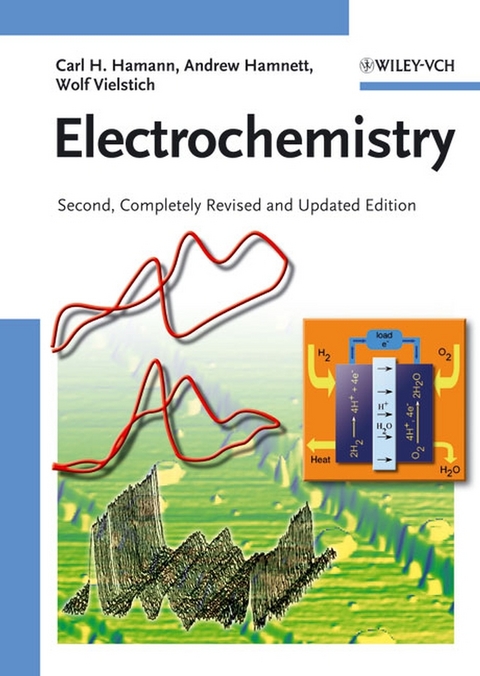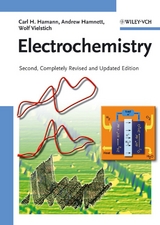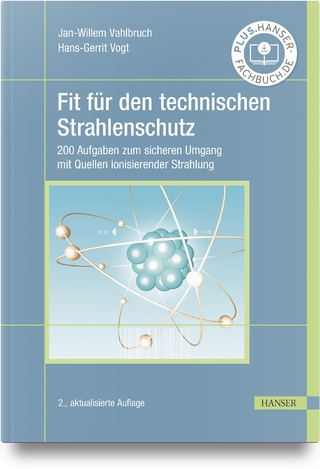Electrochemistry
Wiley-VCH (Verlag)
978-3-527-31069-2 (ISBN)
Carl H. Hamann: Following his studies in mathematics, physics, biology and economics in Hamburg and Bonn, graduating in 1966 as a physicist, Carl H. Hamann gained his doctorate in 1970, becoming Professor for Applied Physical Chemistry at the University of Oldenburg in 1975. He has since concentrated mainly on fuel cells, electrochemical metrology, passage and adsorption kinetics, turbulent flows, the thermodynamics of irreversible systems, preparative electroorganic chemistry and technical electrochemistry. Professor Hamann has thus far published some 80 articles in journals and books. Wolf Vielstich: As Heinz Gerischer's first student, in Göttingen in 1952/53, Wolf Vielstich was concerned with developing a fast Potentiostaten while determining exchange current densities. Upon starting work at the Institute for Physical Chemistry, Bonn University, in 1960 he demonstrated that, apart from mercury, reproducible cyclic voltamograms, such as for the oxidation of hydrogen and methanol, are contained in solid electrodes, including Pt, Ir, Rh, Au and Pd. There then followed experiments with methanol/air and NiMH cells, among others. He was always interested in developing novel methods, such as the rotating ring electrode, on-line MS (DEMS), in-situ FTIRS and UHV analysis of adsorbants. Between 1986 and 1993, Wolf Vielstich was the Coordinator of the first European project to develop a DMFC, and in 1998 he was awarded the Faraday Medal by the Royal Chemical Society. Since 1999 he has been working as a guest of the Universidade de Sao Paulo, and edited Wiley's Handbook of Fuel Cells (2003). Professor Hamnett graduated from the University of Oxford with a BA (Chemistry) in 1970 and a D.Phil. (Chemistry) in 1973. He has held research and academic positions at the University of British Columbia, Canada, and at Oxford and Newcastle Universities, England, before his appointment in January 2001 as Principal and Vice-chancellor of the University of Strathclyde. He has nearly 200 publications in books and scientific journals, covering areas of spectroscopy, quantum theory and electrochemistry. His primary academic interests in recent years include the development and utilisation of spectro-electrochemical techniques in electrochemistry, and the development of improved fuel cells and solar-energy conversion devices.
Foundations, Definitions and Concepts
Electrical Conductivity and Interionic Interactions
Electrode Potentials and Double-Layer Structure at Phase Boundaries
Electrical Potentials and Electrical Current
Electrochemical Methods for the Study of the Electrode/Electrolyte Interface
Reaction Mechanisms
Industrial Electrochemical Processes
Galvanic Cells
Analytical Applications
"The text is certainly comprehensive in its coverage, ranging from ionic mobilities and liquid junction potentials, through redox electrochemistry of proteins and surface spectroscopy of electrocatalytic reactions, to fuel cells, batteries and gas sensors." ( Chromatographia , February 2010)
"The renowned authorial team emphasize application in energy technology while covering the physicalchemical fundamentals, modern methods of investigation, electrochemical analysis and production methods, as well as fuel cells and micro-and nanotechnology." ( Chimie Nouvelle , March 2010)"Both classical contents and modern developments of electrochemistry have been incorporated in this textbook to educate young modern electrochemists ... .A very solid and useful textbook. I highly recommend it to students and researchers." ( The Higher Education Academy Physical Sciences Centre , December 2008)
"...an excellent introduction to the physical-chemical aspects of electrochemistry...and is strongly recommended." ( CHOICE , December 2007)
| Erscheint lt. Verlag | 23.2.2007 |
|---|---|
| Sprache | englisch |
| Maße | 170 x 240 mm |
| Gewicht | 1138 g |
| Themenwelt | Naturwissenschaften ► Chemie ► Physikalische Chemie |
| Schlagworte | Analytical Chemistry • Analytische Chemie • Chemie • Chemistry • Electrochemistry • Elektroanalyse • Elektrochemie • Elektrolyse • Elektrolyte • Oberflächen- u. Kolloidchemie • Physical Chemistry • Physikalische Chemie • Surface & Colloid Chemistry • Surface & Colloid Chemistry |
| ISBN-10 | 3-527-31069-X / 352731069X |
| ISBN-13 | 978-3-527-31069-2 / 9783527310692 |
| Zustand | Neuware |
| Informationen gemäß Produktsicherheitsverordnung (GPSR) | |
| Haben Sie eine Frage zum Produkt? |
aus dem Bereich




